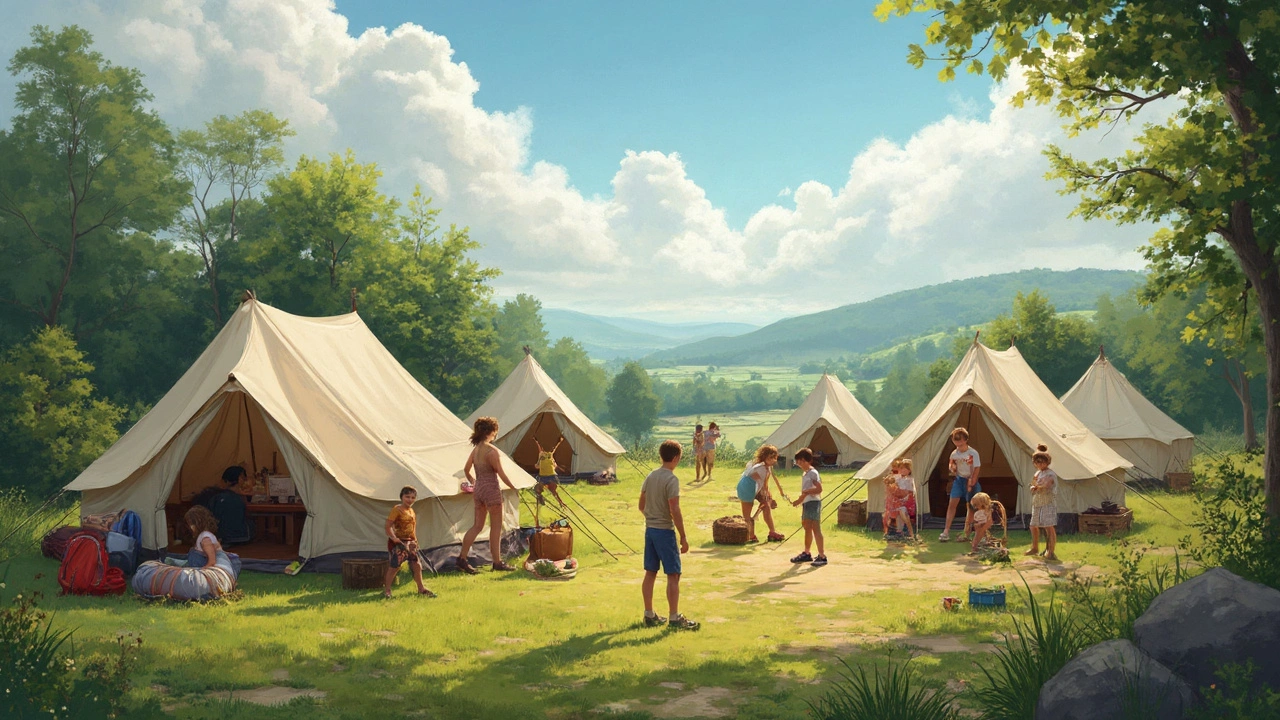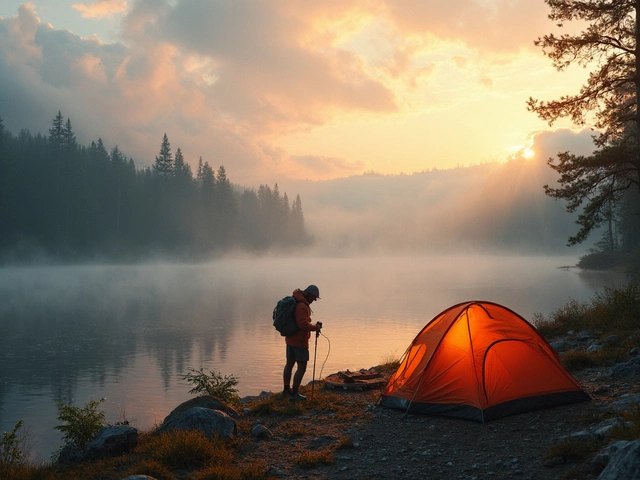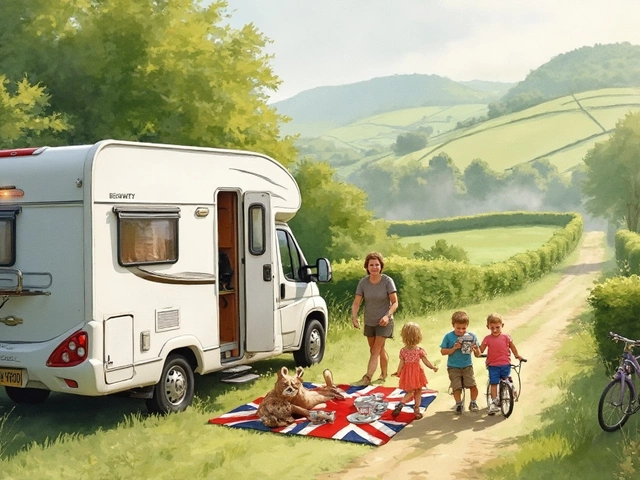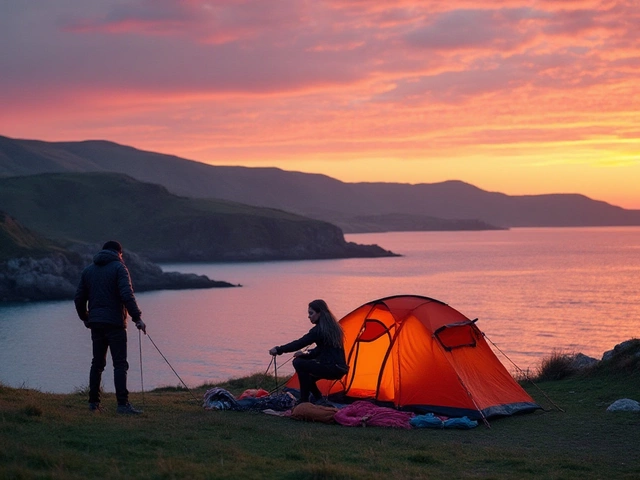People sometimes picture camping as totally safe or, on the flip side, a wild ride full of bears and storms. Reality sits somewhere in the middle. If you stick to family campsites, your biggest hassles are more likely sprained ankles and sunburn than anything life-threatening. But that doesn’t mean you can just wing it.
Most of the trouble I’ve seen out there comes from stuff you can actually plan around—like sudden rainstorms, tripping on roots, or someone forgetting their allergy meds. Even at well-kept campgrounds, a little bad luck mixed with a lot of unpreparedness leads to accidents. That’s why checking the weather before packing, having a basic first-aid kit, and keeping an eye on the kids makes a bigger difference than locking eyes with a raccoon at 2 AM.
If you want to avoid being the family that packs up early with a twisted ankle or spends the night panicking over harmless rustling, stick around. I’ll show you the real risks, the numbers behind common accidents, plus a few tricks I've learned camping with my kid and our dog, Rex. Trust me, most problems have easy fixes if you know what to watch for.
- What Are the Actual Risks at Family Campsites?
- The Numbers: How Common Are Camping Accidents?
- Wildlife and Weather: What to Watch Out For
- Practical Tips to Keep Your Family Safe
What Are the Actual Risks at Family Campsites?
Let’s cut through the stereotypes. Family campsites aren’t war zones, but they do come with some real risks—not always the ones most people fear. If you worry about wildlife, you’re not alone, but animal encounters are actually a lot rarer than you’d think. The more common issues come from basic outdoor living.
Here’s a breakdown of what really trips folks up:
- Trip-and-fall injuries: Roots, rocks, and uneven ground still win as the top culprit. Scraped knees, twisted ankles, and stubbed toes come free with every campsite.
- Weather surprises: Sudden rain, wind, or even quick temperature drops can turn a fun setup into a soggy scramble. About 27% of campsite injuries are linked to slippery or unstable conditions right after weather changes.
- Fires: Campfires are great, but burns are real. Hot grates, spilled drinks, and kids poking at flames are just accidents waiting to happen.
- Minor cuts and scrapes: Setting up tents and using pocket knives? Throw in some bandages, because every family I know leaves with at least one little cut.
- Allergic reactions: Whether it’s bee stings, plant rashes, or forgotten meds, allergies can sneak up fast outdoors.
- Food-related issues: Food that's not stored properly can attract animals, but spoiled food is even likelier to cause trouble—think stomach aches and quick trips to the bushes.
Curious about how common these mishaps are? Check out this table with actual numbers from the National Recreation Safety Council surveys across US family campsites:
| Risk Type | Percent of Reported Incidents |
|---|---|
| Trip-and-Fall Injuries | 34% |
| Weather-Related Mishaps | 27% |
| Minor Burns (Campfires, Cooking) | 13% |
| Allergic Reactions | 9% |
| Food Poisoning | 8% |
| Animal Encounters | 3% |
| Other (Cuts, Gear Failures) | 6% |
So, when it comes to camping risks, mother nature isn’t out to get you. But minor mistakes or moments of distraction lead regular families into most trouble. It pays to watch your step, pack for the weather, and keep basic first aid within arm’s reach. The goal is to stack the odds in your favor so you leave with stories and not injuries.
The Numbers: How Common Are Camping Accidents?
You’d think camping accidents would fill up emergency rooms every summer, but the numbers tell a different story. If you’re camping at legit family campsites, the risks are there, but they aren’t off the charts—especially when you stick to the basics of common sense and a bit of prep.
According to the U.S. Consumer Product Safety Commission, around 16,000 people in the U.S. go to the ER every year from camping-related injuries. Compare that to over 300,000 injuries from backyard trampolines, and camping starts to look pretty tame. Most camping accidents aren’t wild animal attacks or anything super dramatic. It’s mostly slips, trips, burns from campfires, and cuts from using sharp outdoor gear.
That said, kids do get into trouble more than adults—lots of scraped knees and the occasional embarrassing campfire story—so keeping them in sight matters more than anything else at a family campground. Here’s a look at some real stats from recent studies and park reports:
| Type of Camping Accident | % of Reported Incidents |
|---|---|
| Trips and Falls | 38% |
| Burns (Campfire/Cooking) | 22% |
| Cuts/Lacerations | 16% |
| Animal Encounters | 5% |
| Weather-Related | 9% |
| Other (Dehydration, Allergies, etc.) | 10% |
Notice that encounters with animals are actually pretty rare on the list. The big danger is just tripping over a tent line or grilling hot dogs a little too enthusiastically. If you want to keep your family’s name off this list, don’t forget to watch out for those everyday hazards. And if you ever wondered how risky camping is, the official numbers say it’s usually just a camping risk if you’re reckless or skip the basics.
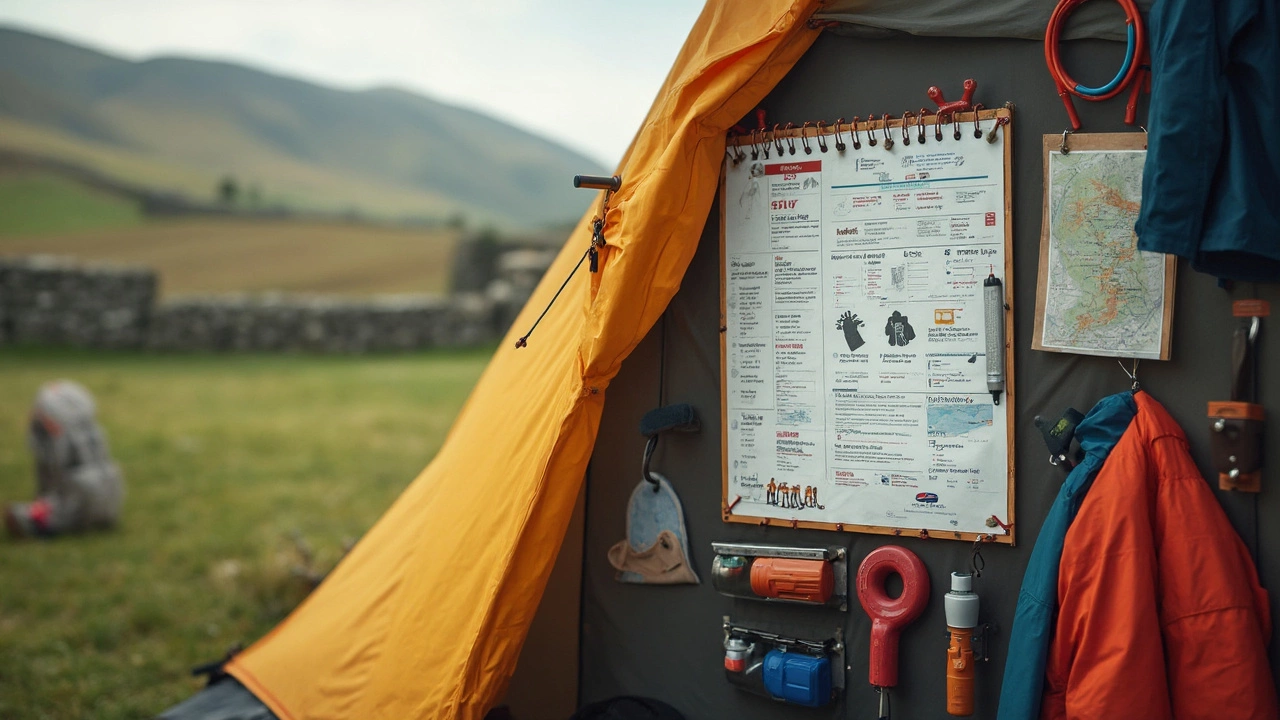
Wildlife and Weather: What to Watch Out For
If you ask parents what worries them most about camping, two things usually pop up: animals and storms. Weirdly enough, those two don’t always play out the way people imagine at family campsites.
Let’s break it down. In the U.S., campers have more close calls with mosquitoes and ticks than with bears or snakes. Most bites are just annoying, but some ticks carry Lyme disease and mosquitoes can pass on West Nile virus. Simple stuff like wearing long sleeves in the evening and using bug spray cuts the odds a ton. If you spot a raccoon, give it space—don’t leave food out at night, and double-check that your trash is sealed. Wild animals want your snacks, not your company. Actual aggressive encounters are rare unless someone leaves food out or tries to feed the wildlife.
Here’s a reality check about animal-related injuries, according to the National Park Service (2023):
| Animal Involved | Avg. Injuries/Year in Campsites (U.S.) |
|---|---|
| Bears | Less than 5 |
| Snakes | About 20 |
| Raccoons/Skunks (bites & scratches) | 50-70 |
| Insects (including ticks) | Over 500 |
Now for the weather. According to the CDC, more than 60% of camping-related ER trips happen during storms—think strong winds, falling branches, or sudden hypothermia from getting soaked. Flash floods are a thing, especially if you camp near streams after heavy rain. Summer heat can be rough too. Kids get dehydrated faster than adults, and it’s easy to overlook.
Here’s how to dodge wildlife and weather drama:
- Check the local weather right before you leave, not just the week before. Storms change fast.
- Set up your tent away from animal trails, dense brush, and right beside the water where critters hang out.
- Use food storage bins or lockboxes if the campsite has them. Don’t eat or keep snacks in your tent.
- Dress yourself and the kids in layers—weather switches up, even in summer.
- If it starts storming, get everyone in the car or a solid shelter—don’t stay under trees or inside tents if there’s lightning.
It’s mostly about staying alert and planning a little ahead. Check for ticks after a walk, stash your food, and don’t ignore bad weather warnings. Most of the time, if you pay attention to the basics, you avoid the messiest problems nature can throw your way.
Practical Tips to Keep Your Family Safe
You don’t need a survival show checklist to keep your family safe at a campsite, but you do need some real basics locked in. Most issues people face are preventable with simple habits and quick checks. Here’s what works—learned from plenty of mistakes, scraped knees, and a dog who thinks every squirrel is a threat.
- camping risks start before you even get there. Check the weather, even if the forecast seems clear. Sudden rain or high winds turn an ordinary weekend into a mess fast. Bring a weatherproof tent—don’t trust the old pop-up from the garage unless you’ve checked it for holes.
- Gear check: pack a first-aid kit with the basics—bandages, antiseptic wipes, tweezers, painkillers, and any personal meds your family needs. Kids are magnets for scrapes and bug bites, so don’t get caught unprepared. I also bring antihistamines after a hard lesson with Larkin's pollen allergies.
- Set up camp before dark. Shadows hide trip hazards like exposed roots and uneven ground. Kids and adults are far less likely to trip when they can actually see where they're stepping.
- Food storage matters more than people realize. Coolers should always be closed tight, and all food should be put away before dusk. Not just to keep raccoons away (though Rex loves chasing them), but also to avoid attracting bigger, less cute animals. If your campsite has food lockers, use them.
- Teach kids boundaries on day one. Make a rule about not wandering off, especially at dusk. Assign buddies if you’re camping with a crowd of little explorers. Trust me, even solid kids can get distracted chasing frogs or a frisbee that goes just a bit too far.
- Stay hydrated but watch water sources—boil, filter, or bring enough clean water. Even family campsites with taps sometimes have “boil water” orders. Don’t risk stomach bugs that will ruin the whole trip.
- Campfire safety? Huge one. Keep extra water or sand near each fire, never leave it unsupervised, and teach kids to keep their distance, no matter how much they want to poke sticks into the flames. Most burns at campgrounds happen around meal times when people let their guard down.
Family camping gets a whole lot less stressful with these habits. Even small steps make a big difference in keeping everyone happy, safe, and looking forward to the next trip.
